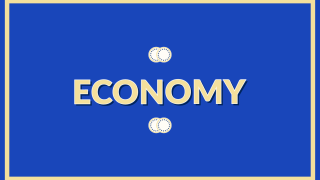In the first two years of President Peña’s administration, structural reforms created an environment of high economic expectations, a strategy that succeeded in briefly placing Mexico as a country “moving forward” at the international level. Some analysts have pointed out that the beginning of Peña’s government is a deja vu that resembles the Salinas administration, who in his early years undertook several major reforms and concluded his term with a political crisis that originated with the murders of Francisco Ruiz Massieu – PRI’s General Secretary – and Luis Donaldo Colosio – the party’s Presidential candidate – , events that resulted in an economic crisis at the beginning of the Zedillo administration. However, the situation is now different because when Salinas was in power, important economic reforms were strengthened with the historic signing of the North American Free Trade Agreement (NAFTA) and, more importantly, there was a perception of reality closer to the actual economic conditions. Meanwhile, the current government tried to construct a new image for the Mexican economy, despite the shortcomings in its institutional framework and the perspective of not understanding the new reality of the country (and the rest of the world). Thus, the very rapid shift in perception that has led to “Mexican moment” to transform into an uncertain environment is no accident. Therefore, what are the real expectations for the Mexican economy?
In the short term, the 2015 midterm elections are a motivation for the government to increase spending, with a high chance of favoring programs that serve electoral purposes. According to the Secretary of Finance (SHCP), it will be possible to absorb a deficit in public finances in the aforementioned year, while balancing the budget via the resources that will be obtained through investments derived from structural reforms, especially the energy one. However the outlook for this sector is not encouraging at all. Currently, exports have decreased and oil imports have increased, which has resulted in the balance of trade balance accounting for only 0.2 percent of gross domestic product (GDP), a number that is ten times lower than the 2 percent in 2006. SHCP estimates that the energy reform will be enough to revive this sector, something that is similar to what was adopted in June 1981 during the presidency of López Portillo attitude when oil prices fell but public spending continued to expand. The latter created a deficit and inflation that continued to rise and led to a deep economic crisis that older generations still remember.
In the medium term, the 2013 reforms can reduce operating costs, which would accelerate economic growth. However, it is also important to take into account the current risks on the return of investments, derived from poor governance and political uncertainty, problems that are yet to be solved. If we add to the mix a clumsy implementation of government projects and public policies, the environment becomes more complex. A recent example is the bidding process for the Mexico – Queretaro railroad, in which the winning company’s tender was removed, thus, increasing the signs of economic uncertainty. The truth is that even if the predicted levels of investment in the medium term were achieved, structural reforms are unlikely to have an effect on absolute long term productivity, a variable that has been decreasing since the early 1990s. This has taken place despite important decisions such as NAFTA, which has certainly had a positive effect in the economy by quickly doubling exports and offsetting the contraction in domestic demand. However, neither NAFTA nor the recent reforms undertaken by the Peña administration may be enough to increase productivity in the country. The situation is not simple and, therefore, the government should build and convey its expectations using reality as its foundation, otherwise the latter will end up exceeding the Executive Power’s own expectations.
CIDAC






Comments